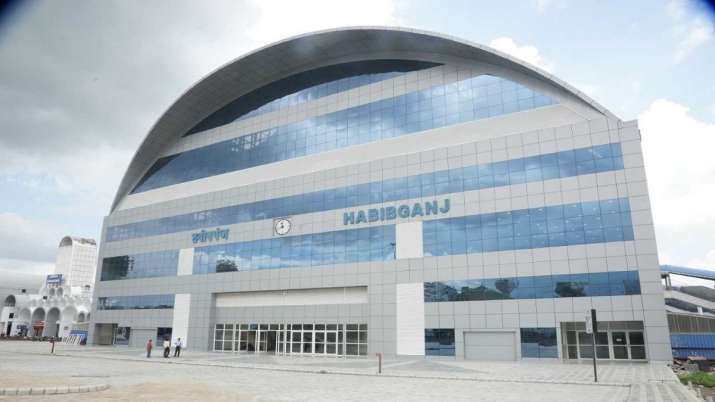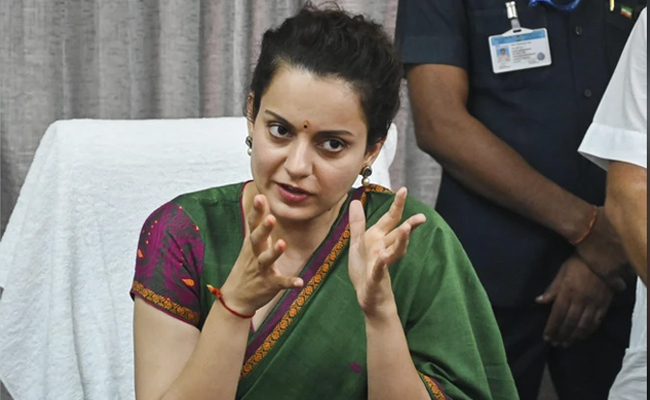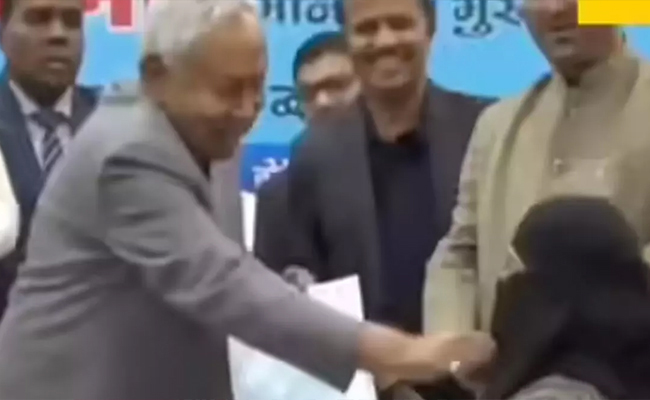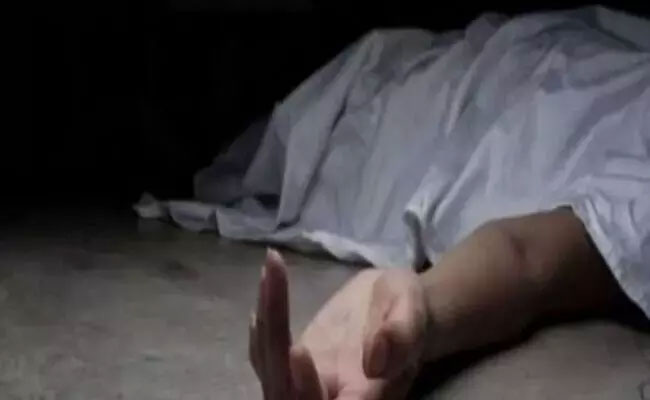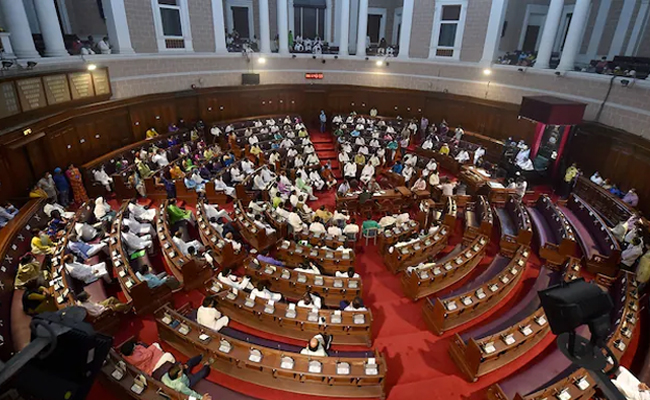Bhopal, Nov 13: The Habibganj railway station in Bhopal has been renamed after Gond queen Rani Kamalapati, Madhya Pradesh Chief Minister Shivraj Singh Chouhan announced on Saturday while thanking Prime Minister Narendra Modi for the decision.
The state government also issued a gazette notification stating that the changed name will be spelt at Rani Kamalapati Railway Station. Chouhan hailed Rani Kamalapati as pride of the Gond community and "the last Hindu queen of Bhopal".
Prime Minister Modi is scheduled to dedicate to the country the railway station which has been redeveloped and provided with airport-like amenities on November 15.
Modi will be visiting the Madhya Pradesh capital to address a tribal convention to mark 'Janjatiya Gaurav Diwas' in remembrance of the tribal icon and freedom fighter Birsa Munda.
"People of Madhya Pradesh are thankful to the Prime Minister for renaming the Habibganj railway station after Rani Kamalapati, the Gond queen of Bhopal," Chouhan said in a statement.
The prime minister enhanced the glory of tribals by renaming this "most-modern railway station of the country" after the Gond queen, he said.
"Rani Kamalapati is the pride of the Gond community and last Hindu queen of Bhopal. Her kingdom was usurped by Afghan commander Dost Mohammed by deceit through a conspiracy. When she saw that victory was not possible, she committed 'Jal Jauhar' (ritual suicide) to save her honour," Chouhan said.
Her son Naval Shah was killed at Lalghati, a part of today's Bhopal, he noted.
On Friday, the BJP government in Madhya Pradesh had written to the Union Ministry of Home Affairs, seeking renaming of the redeveloped Habibganj railway station after Rani Kamalapati, stating that it will honour the legacy and bravery of the widow of the Gond ruler Nizam Shah.
Chouhan, in a tweet on Saturday, reiterated that she was "the last Hindu queen of Bhopal." "Habibganj railway station has been named 'Rani Kamalapati' after her. It is a matter of great satisfaction and joy for me. Prime minister Narendra Modi I thank you from my heart," the chief minister added.
The gazette notification said the "Government of India has no objection to changing the name of Habibganj Railway Station as Rani Kamalapati Railway Station. The work of changing old name boards at the railway station, located in the new Bhopal area, also started.
Congress MLA from Bhopal Central Arif Masood said the land on which the railway station stands was donated by Habibullah Khan, therefore it was named after him.
It would have been better if they had paid attention to development than engaging in the politics of name change. A lot of money is spent on name change. Instead, this money should be given to the families of pandemic victims and for providing free ration, he said.
The state's Public Relations Department shared a news clip on Twitter, saying that the station was built in 1905 and then it was known as Shahpur. It was named Habibganj station in 1979 when it was expanded.
The Gond community is the largest tribal group of India with more than 1.2 crore population.
On Thursday, BJP MP from Bhopal Pragya Singh Thakur had demanded that the Habibganj station be renamed after former prime minister late Atal Bihari Vajpayee.
The station comes under the jurisdiction of the West Central Railway. The Kamlapati Palace overlooking the Upper and Lower Lakes of Bhopal is named after the Gond queen.
हबीबगंज अब होगा रानी कमलापति रेलवे स्टेशन.
— MP MyGov (@MP_MyGov) November 13, 2021
-------
भोपाल के हबीबगंज रेलवे स्टेशन को अब रानी कमलापति स्टेशन के नाम से जाना जाएगा। भारत सरकार द्वारा पुनर्विकसित इस स्टेशन का लोकार्पण प्रधानमंत्री श्री नरेन्द्र मोदी जी द्वारा 15 नवंबर को किया जाएगा।#जनजाति_गौरव_दिवस @RailMinIndia pic.twitter.com/v1tqsqROLx
Let the Truth be known. If you read VB and like VB, please be a VB Supporter and Help us deliver the Truth to one and all.
New Delhi: A significant political controversy has erupted following the Modi government's decision to rename the Mahatma Gandhi National Rural Employment Guarantee Act (MGNREGA), a move that has drawn sharp criticism from opposition parties. The row was further fueled by BJP MP Kangana Ranaut, who, while defending the name change, erroneously claimed that Mahatma Gandhi had made the devotional song "Raghupati Raghav Raja Ram" India’s national anthem.
The central government has rebranded the flagship rural employment scheme from MGNREGA to the "Viksit Bharat-Guarantee for Employment and Livelihood Mission," abbreviated as VB-G RAM G. The removal of Mahatma Gandhi's name from the scheme has been termed an insult to the Father of the Nation by the Congress and other opposition parties.
When questioned by the media outside Parliament regarding the opposition's allegations, Mandi MP Kangana Ranaut defended the government's decision by invoking Mahatma Gandhi's devotion to Lord Ram.
"How is naming it 'Ram Ji' an insult to Gandhi ji?" Ranaut asked. "Mahatma Gandhi made 'Raghupati Raghav Raja Ram' the national anthem to organize the entire country. Therefore, this is an insult to Mahatma Gandhi? The government is fulfilling his dream by giving it the name of Ram."
Ranaut's claim regarding the national anthem was immediately seized upon by the opposition. Congress leader Supriya Shrinate shared the video of Ranaut’s statement on social media, tweeting sarcastically, "Come on brother, today we learned a new national anthem! The BJP is full of such gems."
Social media users also trolled the MP for the factual error. One user quipped, "Kangana ji forgot to mention that Bapu made this the national anthem after the country got independence in 2014," while another commented that the party finds people who "don't use their brains while forwarding WhatsApp messages."
Beyond the social media mockery, senior Congress leaders criticised the renaming on ideological grounds. Former Rajasthan Chief Minister Ashok Gehlot took to X (formerly Twitter) to condemn the move.
"The biggest irony is that Mahatma Gandhi was a lifelong devotee of Lord Ram and said 'Hey Ram' in his last moments," Gehlot wrote. "Today, the central government is making a despicable attempt to sideline Gandhi ji under the guise of the same 'Ram' name (VB-G RAM G), which is highly condemnable."
मनरेगा का नाम बदलने की केंद्र सरकार की कवायद महात्मा गांधी के प्रति उनकी ओछी मानसिकता और असम्मान का प्रमाण है। सरकार पहले 'पूज्य बापू' के नाम का शिगूफा छोड़ती है और फजीहत होने पर अब 'विकसित भारत-गारंटी फॉर रोजगार एंड आजीविका मिशन (VB-G RAM G)' जैसा नाम थोपना चाहती है। बार-बार नाम…
— Ashok Gehlot (@ashokgehlot51) December 15, 2025
गांधी जी ने ‘रघुपति राघव राजा राम’ को लेकर नेशनल एंथम बनाया था
— Supriya Shrinate (@SupriyaShrinate) December 16, 2025
BJP MP कंगना रनौत
चलो भाई आज नया नेशनल एंथम भी पता चला है!
BJP में एक से एक शिरोमणि भरे पड़े हैं 😂🤣 pic.twitter.com/9DvyV5xLb1

